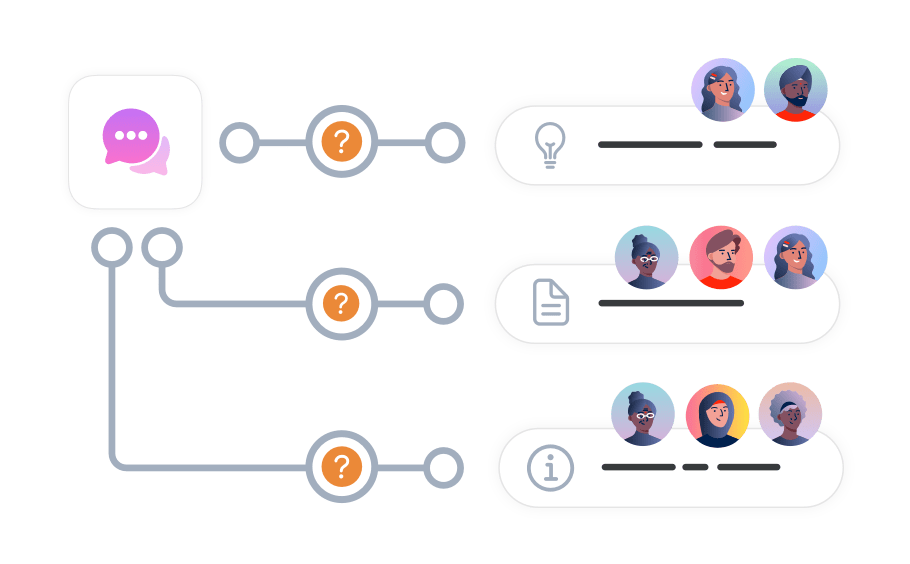Why organizations need good internal communication
Internal communications (IC) governs the flow of information, knowledge and resources within an organization. This interchange of data is essential to ensuring that day-to-day operations and internal processes can proceed efficiently, and in line with the business objectives and mission of the enterprise. An effective internal communication strategy also helps the organization perpetuate and nurture the unique company culture that unites its stakeholders in a common goal.
![[FREE GUIDE] How To Align Your External and Internal Communication](https://no-cache.hubspot.com/cta/default/5025095/0964df73-d0da-4b46-a5bb-b215e96e0406.png)
Business organizations looking for competitive advantage therefore need a robust and comprehensive internal communication strategy.
A powerful internal communications strategy provides the framework for making available the information and resources that are critical for business success – and the means to ensure the employee satisfaction and employee engagement that make this success sustainable. This factor is hard to over-stress. In organizations where employees are connected by a strong IC network, the McKinsey Global Institute has found that employee productivity increases by 20-25%.
In the wake of the COVID-19 pandemic, remote and hybrid working patterns have become increasingly widespread. This is forcing organizations to rely even more on their IC strategy tools to keep business processes running and maintain engagement amongst a dispersed workforce.
So, how can your organization get the most out of its IC strategy? Here are eight internal communication examples that can help.
1. Distributing newsletters for internal communications
As part of your IC strategy, you can circulate a weekly, monthly, bimonthly, or quarterly newsletter. Typical communication channels for distributing newsletters include email, and a dedicated section of your company intranet.
A newsletter for internal communications provides an avenue for your organization to provide information and updates about the company, such as growth and revenue data, or messages from the board of directors and CEO. Other information that an internal comms newsletter can disseminate include product and technology developments, announcements about upcoming events, and internal statistics such as customer feedback data.
2. Relying less on email for internal communication
Email overload is a problem that your workers may have to deal with – especially if their business email addresses are known to third-party organizations and individuals. In their attempts to avoid spam and unwanted promotions, they may willfully ignore internal communication emails that contain vital information.
Using private messaging apps such as those provided by your company intranet or IC platform is one way to avoid this issue. Employee apps for internal communication may have advanced features like voice messaging, video calling and digital whiteboards that increase engagement with your internal comms and boost employee satisfaction.
3. Creating a knowledge base
Giving stakeholders quick and easy access to information on demand is a key element of any effective IC plan. A knowledge base can provide a centralized location containing the data and resources that your employees need to answer any questions they may have.
This internal communications resource can also provide an avenue for disseminating key information relating to policy management issues, emerging industry trends, and regulatory compliance matters.
![[FREE GUIDE] How To Align Your External and Internal Communication](https://no-cache.hubspot.com/cta/default/5025095/0964df73-d0da-4b46-a5bb-b215e96e0406.png)
4. Creating internal communication channels to answer queries

If certain issues or queries repeatedly come up in your internal communication with workers, you can go a step further by creating dedicated IC channels for answering Frequently Asked Questions. Industry best practices and guidelines on issues like Health & Safety are also prime candidates for inclusion in your internal communications for handling queries.
5. Shout outs and introductions
Who’s running point on your latest project? Which teams exceeded their production quota this month? Identifying these people and giving them kudos for their achievements is an internal communications strategy that provides useful information while simultaneously promoting employee engagement.

You can publicize this information in a number of ways. For example, collaborative mobile intranets can notify every single employee of important updates instantly thanks to push notifications. Using an internal communication tool like business text messaging, you can provide a forum for new hires to introduce themselves, giving their location, job function and personal fun facts or hobbies.
Recognizing and publicizing good performance, encouraging social bonds across the organization and – sometimes – simply making your employees smile motivates your workforce and helps create a company culture that retains talent.
6. Virtual meeting places
With remote working now a serious consideration for successful internal communications, any effective internal communication strategy needs to include digital avenues and channels for one-to-one interaction and group collaboration.
For example, the Claromentis intranet and internal communications platform enables you to connect your teams with collaboration spaces and corporate social networking. Using a content management system with drag & drop capability, Claromentis enables you to build your own engaging intranet pages and target internal communications content to specific teams.
7. Using surveys and feedback to monitor employee engagement

Assessing levels of employee engagement is critical to determining the success or otherwise of your internal communications strategy. Internal surveys are an internal communication tool that enables you to gather employee intelligence and transform this information into meaningful insights for decision-making. This applies not only to feedback on how well your internal communication plan is working, but also to operational matters that can help improve productivity and business efficiency.
Using internal communications for feedback can also be a two-way street. For example, with real-time messaging tools and notifications, managers and project leaders can give workers guidance on their current job performance.
8. Using an employee app or intranet platform
Deploying an employee app or using a company intranet platform is a great way to optimize your internal communications strategy, while providing always-on access for mobile and remote workers. As we have seen, employee apps can act as receivers for custom notifications and targeted communications. They can also provide tools and dashboards for specific job functions.
Claromentis is an intranet solution with a difference. All our apps are easy to access from your integrated digital workspace, making it a one-stop-shop for sharing information, collaboration, and internal communications. Our intranet and mobile app work in harmony with our e-learning, e-forms, automated workflows, and project management features, providing teams with an integrated digital workplace to call home.
If you’d like to learn more about how Claromentis can provide an internal communication platform that takes your organization to the next level, book a demo with our experts.
![[FREE GUIDE] How To Align Your External and Internal Communication](https://no-cache.hubspot.com/cta/default/5025095/0964df73-d0da-4b46-a5bb-b215e96e0406.png)




